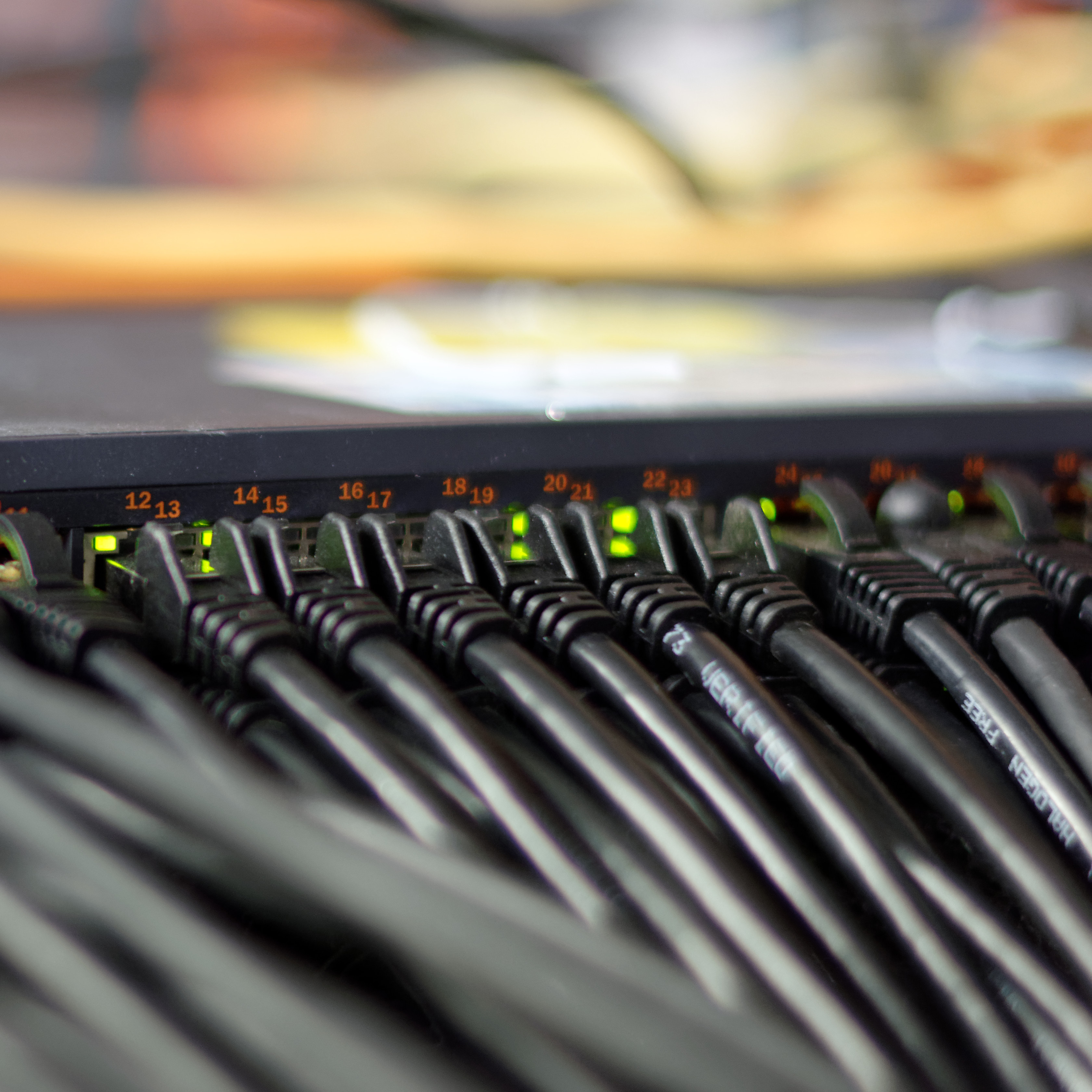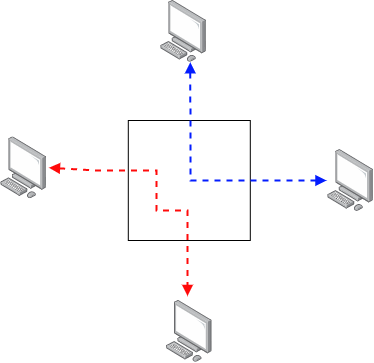The Star Network Topology

The distinguishing feature of a star network is that all communication between devices passes through a single central point. This is in contrast to a bus network which has no central point and devices on the network talk directly to each other. In a star network computers never talk directly to each other and the central point is responsible for passing messages between devices. In a star network the single point through which all communication occurs may be called a switch, router or access point.

Home networks are usually a star arrangement. If you have devices attached to your broadband by ethernet cable, each device has its own separate cable connected to a central router. If two devices on your home network wish to exchange data with each other, they do so via the router working as an intermediary. The devices are not directly cabled together and have no means of talking to each other without the involving the router.
An advantage of the star arrangement over the bus arrangement is that each device on the network has it's own dedicated cable. In a bus network each device shares a single cable and the amount of transmission capacity available (bandwidth) must be shared between the number of devices that want to talk at the same time. In the star arrangement, the central point (switch) temporarily links up devices that want to talk to each other and supplies the full capacity of the cable to each device. There are also no collisions since there is only one device using each cable, which improves performance.

Bus networks, depending on the type, can have problems with reliability if one device on the network becomes faulty or is disconnected. A single broken device (e.g. with the transmitter stuck on) would take out the entire network and no other device could use it. Some bus network designs rely on every single device on the network being in full working order and being connected up correctly such that messages can be passed further down the wire. Additionally a single wire means that if the wire is damaged, the entire bus network is out of action. A star network does not have these problems because each device has its own cable. If there are faults with one device or its associated wire, this has no impact at all on other devices on the same network.
A disadvantage of the star arrangement over the bus network is that more physical wire is needed, which can prove to be expensive and especially so if the cable must travel over a long distance to reach the central point. Additionally a complex piece of electronics is required to act as the central controller, although in recent times these have become quite affordable.
Wi-fi is also (usually) arranged as a star network, however, this is slightly different to the cabled version. In this case the devices all share the same communications medium and could in theory talk directly to each other. Your home wi-fi is allocated a specific radio frequency to use and all the devices on the same network share exactly the same frequency. There is nothing physically preventing one wi-fi device from sending information directly to another exactly like a bus network but in practice they do not do this. Wi-fi devices always talk via a central access point in a star arrangement which acts as an intermediary passing messages between devices.
It is common for star networks to be further linked together in a star of stars arrangement. When wi-fi must be supplied to a large building such as an office block, the radio range is often insufficient for the wi-fi to reach everywhere. To solve this, several wi-fi access points are deployed throughout the complex. Each wi-fi access point acts as a star network for devices in the immediate vicinity. The access points are then cabled together into a greater star network.
Image credit: Network Switch
